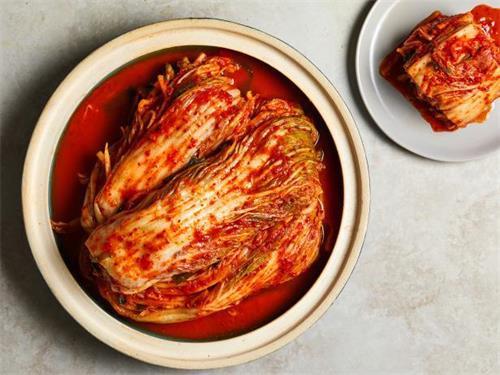






Korean cuisine is a vibrant and diverse tapestry of flavors, colors, and textures that has captivated taste buds around the world. One of its most iconic and ancient culinary traditions is kimchi, a fermented vegetable dish that has been a staple in Korean households for centuries. This beloved dish offers a symphony of flavors, from the tangy and spicy to the umami-rich, and is an essential part of Korean culture.
History: Discover the Age-Old Practice of Fermenting Vegetables in Korean Cuisine
The history of kimchi can be traced back over 2,000 years, making it an integral part of Korean culinary heritage. The practice of fermenting vegetables, including cabbage, radishes, and cucumbers, was initially a means of preserving these vegetables during the harsh Korean winters when fresh produce was scarce. Fermentation not only extended the shelf life of the vegetables but also enhanced their nutritional value.
Fermentation involved packing vegetables in a mixture of salt and other seasonings, allowing them to undergo a controlled fermentation process. Over time, the traditional practice of making kimchi evolved, incorporating various vegetables and seasonings to create the diverse range of kimchi varieties we see today.
Recipe: Kimchi (Fermented Spicy Cabbage)
Ingredients:
- 1 medium-sized Napa cabbage
- 1/2 cup sea salt
- 4 cups water
- 1 tablespoon grated ginger
- 3 cloves garlic, minced
- 2 tablespoons Korean red pepper flakes (gochugaru)
- 2 teaspoons sugar
- 3 green onions, chopped
- 1 medium carrot, julienned
- 1 small daikon radish, julienned

Instructions:
1. Prepare the Cabbage:
Cut the Napa cabbage in half lengthwise and then cut each half into quarters. Remove the core. Sprinkle the cabbage quarters with sea salt, making sure to get the salt between the leaves. Let them sit for about 1-2 hours, turning occasionally.
2. Rinse and Drain:
After salting, rinse the cabbage under cold water to remove excess salt. Squeeze out any excess water and let them drain in a colander for about 30 minutes.
3. Prepare the Kimchi Paste:
In a large mixing bowl, combine water, Korean red pepper flakes, sugar, minced garlic, and grated ginger to create a paste.
4. Mix the Vegetables:
Add the chopped green onions, julienned carrot, and daikon radish to the paste. Mix well to ensure the vegetables are evenly coated with the kimchi paste.
5. Combine with Cabbage:
Gently squeeze the excess water from the rinsed cabbage and add it to the kimchi paste mixture. Mix thoroughly, ensuring the cabbage is well coated with the kimchi paste.
6. Fermentation:
Place the kimchi into a clean, airtight jar or container, pressing it down to remove air bubbles. Allow for some headroom at the top of the container to accommodate expansion during the fermentation process. Seal the container and allow it to ferment at room temperature for 1-2 days, depending on your desired level of fermentation.
7. Store and Serve:
After fermentation, store the kimchi in the refrigerator. Kimchi can be enjoyed immediately, but its flavors will continue to develop and intensify over time.
Embrace the Tradition
Kimchi is more than just a dish; it represents the essence of Korean culture and tradition. The blend of flavors, the process of fermentation, and the communal act of preparing and sharing kimchi are deeply ingrained in the fabric of Korean society. As you enjoy the tangy, spicy, and invigorating taste of kimchi, you are immersing yourself in the rich history and culinary artistry that defines Korean cuisine.

Japanese Cuisine: Sushi Unveiled
Japan's culinary landscape is a fascinating mosaic of flavors, techniques, and traditions.

Lebanese Cuisine: Mezze Madness
Lebanese cuisine is a delightful blend of flavors, aromas, and textures, and at the heart of this culinary experience lies the cherished tradition of mezze.

Egyptian Cuisine: Ful Medames and Nile Delicacies
Egyptian cuisine is a tapestry of flavors, influenced by centuries of history, culture, and the rich bounty of the Nile River.